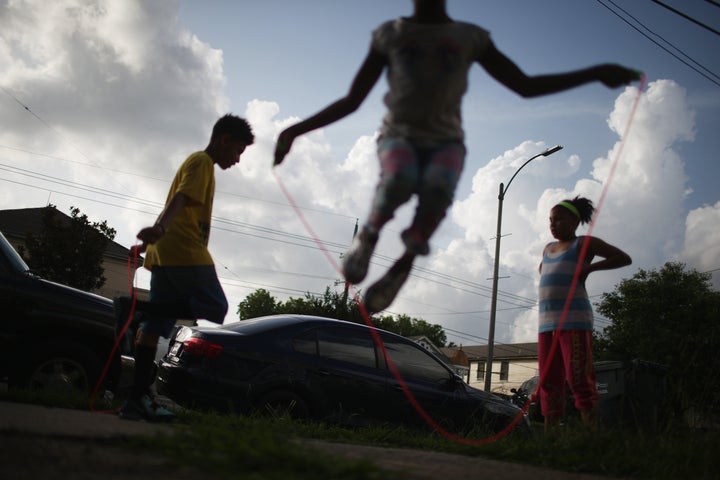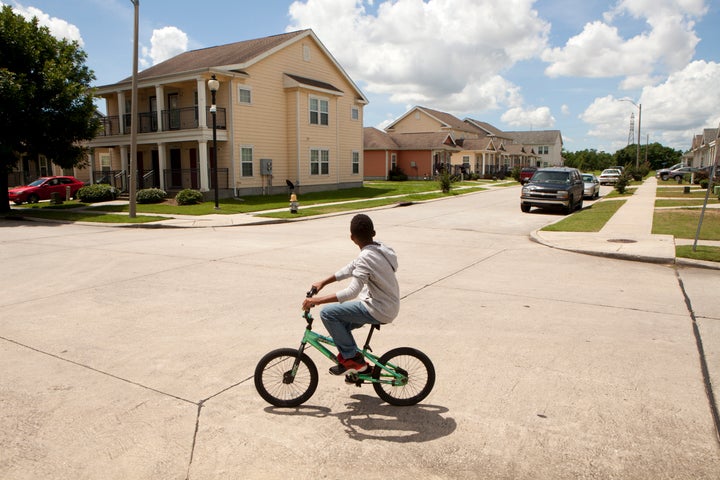Take a look at the current state of education in New Orleans and you’ll see things have steadily improved since 2005, the year Hurricane Katrina devastated the city. But while the progress schools have made prompts praise, school leaders say it doesn’t paint the full picture.
Leaders throughout the city have dedicated their lives to the kids who, they hope, will guide New Orleans to a better future. But as they do, there are still certain challenges students, teachers and families must overcome, many of which disproportionately affect African-American students.
We spoke with black school leaders in New Orleans, who weighed in on the state of education in the city now and the areas that have -- and have not -- improved in the last 10 years.
Here are seven things they want you to know:
1. There Is A Huge Need For More Mentors And More Experienced Teachers
Kids in New Orleans are in deep need of positive role models, says Jamar McKneely, CEO and co-founder of InspireNola charter schools, which represents two faculty-run schools.
“Every day on our news, we're seeing killings, especially in New Orleans, right? And not only are we seeing killings, we're seeing African-American males and females always getting shot,” he said. “So for [kids], they have no self-understanding of what they can become because that's all they've glorified and see.”
Adding to this may be the fact that the predominately black student population in New Orleans now looks less like its teachers than before the hurricane. Following Katrina, teachers in New Orleans were laid off en masse as many schools were closed or converted to charter schools. The teachers who were hired after the fact are whiter and less experienced than those who came before them.
During the 2003-2004 school year, 72 percent of the teacher workforce in New Orleans was black. In 2013-2014, this same number was at 49 percent. During the 2004-2005 school year, only 48 percent of teachers in the area had less than 10 years of experience. By 2013-2014, this number had shot up to 70 percent, according to data from the Education Research Alliance for New Orleans.
2. Rates Of Success Have Drastically Increased
In 2005, nearly 75 percent of the schools in New Orleans were failing by state standards. That number has drastically decreased, now standing at 7 percent. The city, which is now the national leader in the black male graduation rate, can credit much of this success to $1.8 billion that was invested in repairing many of the schools that were demolished in the storm -- as well as t0 school leaders who have been committed to bringing about change.
Educational measures suggest that kids are doing better in school now than they were before the hurricane. Graduation rates have increased dramatically in the past 10 years, going from 54 percent to 73 percent. The number of students performing at grade level has shot up, according to a report from the National Urban League.
Sivi Domango, the co-director of Arthur Ashe Charter High School, says she can see the difference.
“Overall, the district is absolutely stronger than it was,” said Domango. “I think right now the focus on education is a key to the success and ongoing growth of the city.”

3. Childhood Poverty Has Serious Effects
More than 50 percent of African American children in New Orleans live in poverty, data shows. The staggering number is a result of low income rates and high unemployment levels among black men and women in the city -- and disparities with their white counterparts continue to widen.
For many black kids, the serious effects of child poverty go beyond examining its impact on their success in school. It also affects their livelihood.
“It goes to show you the various different dynamics that our kids are experiencing in their households where they're just looking for somebody who can believe in them to provide a safe, secure atmosphere,” McKneely said.
“We gotta have some heart-to-heart conversations based on these statistics and say, 'What can we do within the next one to three years to really close the achievement gap even more?' Because if we're still having a lot of kids in poverty, then we're still missing the boat,” he added.
4. There Is A Strong Focus On Post-Secondary Prep And Career Readiness
Domango said that in her school, there is more of an emphasis on college now than she saw in the past or at previous schools.
“We now definitely focus a lot on [college],” said Domango. “Not that college was not the focus initially, but the conversation is happening more.”
This is reflected in college-going rates in New Orleans schools. About 60 percent of students in the class of 2014 enrolled in college upon graduation, the National Urban League reported. Of this number, about 48 percent of the class of 2014 went to an in-state college. In 2004 -- when the Louisiana Department of Education only collected data on kids who stayed in state -- 37 percent of high school graduates went to an in-state university.
5. Psychological And Mental Health Concerns Should Not Go Overlooked
Experiencing the devastation and death in the aftermath of the hurricane had very serious psychological effects on both children and their families.
In New Orleans, 60 percent of children show signs of post-traumatic stress disorder, according to education consultant Nash Crews. And when compared to their peers nationwide, children in the Crescent City are 4.5 times more likely to show symptoms of serious emotional disturbance.
“It definitely impacted our kids emotionally. They definitely struggled in school, some even after returning to NOLA still had social and emotional struggles,” Domango said.
Meanwhile, schools are struggling to adequately address the needs of students who have psychological distress and disabilities, which often lead to suspensions or expulsion when students exhibit behavioral issues. However, in an attempt to find a solution, the city will soon open a therapeutic day program that aims to provide students with individual services to better address their mental and behavioral health needs.

6. There’s Still Much To Be Done
Although there has been much improvement in the quality of education in New Orleans, things aren’t where they should be ... yet, McKneely said.
“I think that one of the biggest challenges is although we're making improvements, we still have so far to go,” he said. “We really need, more than ever, our true leaders, to stand up and set an agenda where we can rally around common [goals] of what we need to do.”
“Even if our kids are graduating at a higher rate and we have more African American kids graduating more than ever before, there's still a lack of jobs out there,” McKneely said. “Then what can you do? Even if they graduate and they try to have a job, the only jobs that we can offer are those [that are] still very low-paying. It’s a counterproductive cycle.”
7. But There’s Plenty Of Hope For The Future
Despite the challenges, school leaders say that they are optimistic for the future of New Orleans schools, and have high hopes for where they will be 10 years from now.
In 2006, then-President George W. Bush visited Warren Easton Charter High School to mark the one-year anniversary of the hurricane. He visited again this week.
“When he was here [the first time] we didn’t have air conditioning, we didn’t have a gym, we didn’t have a health center, and we have all of those things now,” said principal Alexina Medley. “With our children we can now say, ‘Hey, we’ve come a long away.’ You can imagine if we’ve done this on the 10th anniversary, then think about what we can do in the next 10 years.”